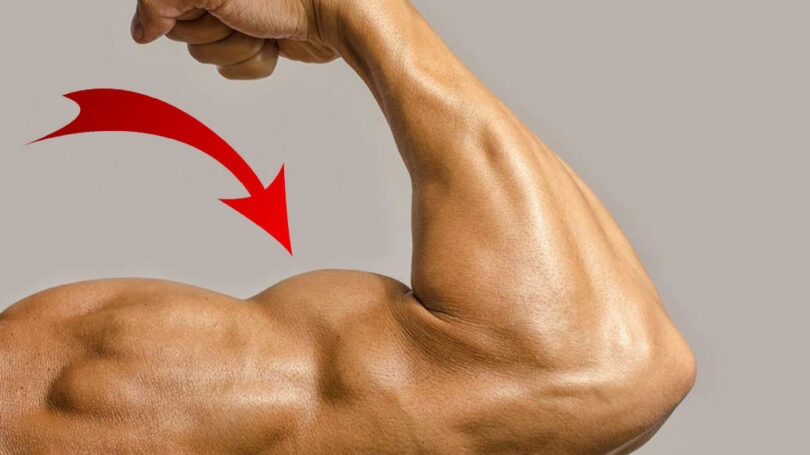Athletes who have problems developing arm muscles definitely haven't read McRobert Stewart's Arms of Titan. Well, speaking about creating big arms, I can’t help but mention this wonderful book, because I once read it avidly, trying to develop the strength and size of my biceps as quickly as possible. In my opinion, it contains comprehensive information on how to develop arm muscles in the shortest possible time. In addition, I tested the theory in practice when preparing for a bodybuilding competition. We will talk about the theory and practice of developing large hands in this article.
Interesting fact
The arm muscles are small in size and volume compared to other muscles in the human body.
In bodybuilding, as you know, in addition to the quality of muscles and their volume, proportions play an important role. At a time when bodybuilding was still aesthetic, not exaggerated and caricatured, when bodybuilders looked like the living embodiment of the Greek gods, and even surpassed them in aesthetics, the ideal proportions were those when the volume of the athlete’s biceps and triceps was identical (approximately) volume of the lower leg.
The principle of developing large hands
Of course, I won’t be able to put the entire book of McRobert Stewart “Hands of Titan” into one article, but I can put the essence that the author put into its lines.
The author claims that you need to pay attention to the arm muscles only when the shoulder volume is at least forty centimeters! The question immediately arises: “What should I do? After all, my biceps are 33 centimeters”? The answer is simple and I will give it in the form of a three-day training course, thanks to which the volume of the arms will rapidly increase, but first, let's look at the principle of creating titanium arms.
The first thing you need for rapid growth of shoulder muscles is the mobilization of the body’s forces, This can only be achieved using basic multi-joint exercises. That is, the workout should consist of barbell presses, squats and lunges with free weights, deadlifts and other basic exercises. All options that isolate muscles are not suitable.
“Where are the exercises for training biceps and triceps”? – you think. As I already said, they are not needed at the initial stage. Training with free weights necessarily loads both triceps and biceps, and those whose “cans” do not have a volume of 40 centimeters do not need additional load.
Further, when the arms increase in volume, you will need to include exercises for the biceps and triceps, but even in this case they should not be isolating. Only free weights should be used.
Now let's move on to practice
For beginners, the most suitable option is to use circuit training, when all exercises for all muscle groups are performed alternately in one session. Typically, working weights and the number of approaches at this stage are minimal.
Circuit training example
- The number of approaches and the weight of sports equipment are selected individually.
- Number of repetitions: 10-12.
- Breaks between sets: 30 seconds.
- breaks between circles: 1-2 minutes.
Exercises:
- Bench press on a horizontal bench.
- Inclined dumbbell flyes.
- Pull-ups.
- Vertical block pull.
- Squats.
- Farmer's walk.
- Calf raise.
- Twisting.
- Hyperextension.
The next stage is the use of split training. In them, the athlete separates muscle groups and performs loads on them on certain days. A three-day split suits us.
Split training example
- The number of approaches, the weight of sports equipment and the rest time between approaches and exercises are selected individually.
- There should be a break of at least one day between workouts.
- Number of repetitions: 10-12.
The first day
- Bench press lying on a horizontal bench.
- Dumbbell bench press at a 45 degree angle.
- Dips.
- Arnold press.
- Swing dumbbells in front of you.
- Pullover.
- Twisting.
Second day
- Pull-ups.
- Barbell row to the waist.
- Deadlift.
- Dumbbell rows horizontally (rear deltoids).
- Bent-over dumbbell flyes (rear deltoids).
- Hanging leg raises.
- Hyperextension.
Day three
- Squats.
- Farmer's walk.
- Shin training (any exercise).
- Vertical press.
- Dumbbell raises to the sides.
- Raising your legs on an inclined bench.
- Hyperextension.
The next step will be to add exercises for the arm musclesbut they will need to be included in the training process after the arms grow in volume up to 40 centimeters.
The training should include the following exercises:
For biceps:
- Pull-ups with a narrow (reverse) grip.
- Seated arm curl with a barbell.
- Seated arm curl with dumbbells.
- Upper block rows with a narrow (reverse) grip.
For triceps:
- Bench press with a narrow grip.
- French press.
- Dumbbell extension from behind the head.
- Extension of arms in the upper block of the crossover.
I hope this article will be useful and help you achieve your desired results!
Leave comments and share your ways to develop arm muscles.


Leave a Comment